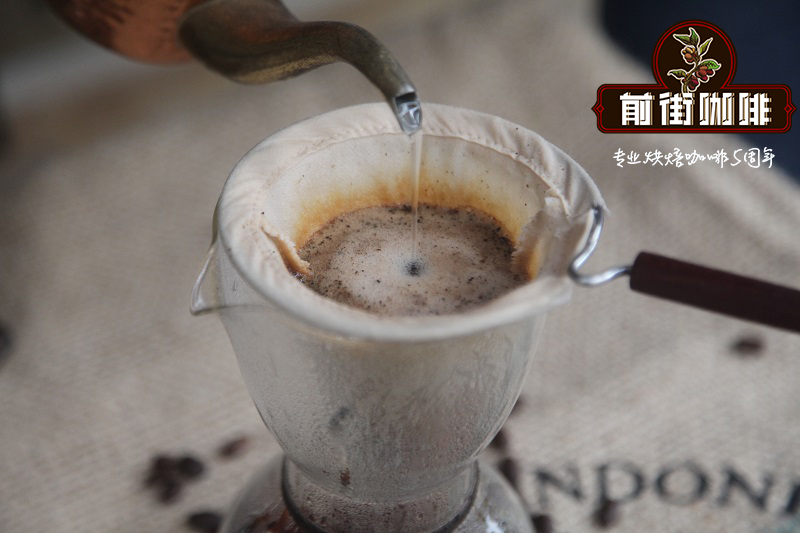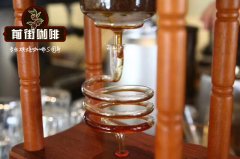What is the relationship between altitude and sour taste? What are the advantages of coffee beans grown at high altitude? What reason does altitude determine?

Professional coffee knowledge exchange more coffee bean information please follow the coffee workshop (Wechat official account cafe_style)
What is the relationship between altitude and sour taste? What are the advantages of coffee beans grown at high altitude? What factors does altitude determine?
We have taken you to learn more about coffee trees from a botanical point of view. Now, let's talk about what kind of environmental conditions are more suitable for the growth of coffee trees. Of course, the more favorable the natural environment, the easier it is to produce high-quality coffee beans. In addition, "Arabica species" and "Robusta species" are different in tree species, so the requirements for the environment are also briefly explained and introduced in three aspects: "rainfall", "temperature" and "height".
Rainfall: the suitable rainfall varies slightly depending on the variety. The "Arabica species" is about 1200mm / year, and the "Robusta species" is about 2200mm / year.
Temperature: the suitable temperature varies slightly from variety to breed. "Arabica species" is more suitable for the environment of 20 ℃ ~ 25 ℃ degrees, while "Robusta species" has a much larger range of tolerance to temperature, as long as 24 ℃ ~ 36 ℃ degrees Celsius can be regarded as its suitable temperature.
Although the data listed above, whether in terms of rainfall or temperature, are only approximate. But smart readers may be able to get a glimpse of why rainforest countries such as Southeast Asia and India have generally planted the cheaper Robusta beans. To tell you the truth, these conditions are generally more suitable for growing "Robusta beans".
Height: the suitable height varies with different varieties. The suitable height for "Arabica species" is about 800 to 2000 meters above sea level, while that for "Robusta species" is 0,800 meters. In fact, the "Robusta species" has few altitude restrictions, so in heavily planted Asia, you can often see a lot of coffee plantations on low-altitude flatlands.
High altitude
Based on the data collected by the author for a long time, coupled with my accumulated experience and exchanges with my colleagues, the author found that, except for some areas with special geographical conditions, generally speaking, the quality of coffee trees planted at an altitude of about 800 to 2000 would be better, and some coffee gluttons even directly decided that there would be no good beans below 1000 meters above sea level. The author does not agree with such a classification, but it also reflects that the height has a certain impact on the quality of coffee beans.
Basically, coffee trees are native to the highlands of Ethiopia, so in the past coffee trees were also planted in mountainous areas with certain heights. Because most of the areas where coffee is grown are near the equator, the flat land in this area is obviously too hot for coffee trees. However, this specifically refers to the "Arabica species", but it is a different matter for the "Robusta species".
In addition, as mentioned earlier, the special geographical environment of each region often causes surprises under many exceptions, so readers need not be too obsessed with these data. For example, KONA coffee from Hawaii, which is almost as famous as Blue Mountain a few years ago, Huisun coffee from China, which has won an American Food Award, and coffee from Yunlin Gukeng Hebao Mountain, which has recently been vigorously promoted by the government, are all low-altitude coffee beans, but their quality is not necessarily bad. If readers are interested, they can try to compare them.
Having said that, there are many areas that attach great importance to the geographical condition of "planting height" (including some of the coffee gluttons mentioned above) and even become the standard for the grading of coffee beans in the region. Many bean-producing countries in Central America, including Guatemala (Guatemala), Costa Rica (Costa Rica), El Salvador (Salvador) and other regions, their coffee beans are graded according to the height of their producing areas. They believe that the higher the height of the producing area, the denser the texture (hard) of the coffee beans, not only the richer taste, but also the better aroma, so the highest grade of coffee beans, Strictly Hard Bean (referred to as SHB, very hard beans), grow at a height of about 4500 to 6000 feet, while those growing at a height of 4,000 to 4500 feet are called "Hard Bean". As for the coffee beans produced in Pacific (Pacific Ocean coastal area) at a lower altitude along the Pacific coast, they are the lowest grade beans.
Important Notice :
前街咖啡 FrontStreet Coffee has moved to new addredd:
FrontStreet Coffee Address: 315,Donghua East Road,GuangZhou
Tel:020 38364473
- Prev

What is the relationship between altitude and coffee flavor? What is the difference between coffee beans grown at low altitude and high altitude?
Professional coffee knowledge exchange more coffee bean information please follow the coffee workshop (Wechat official account cafe_style) the relationship between altitude and coffee flavor? What is the difference between coffee beans grown at low altitude and high altitude? The quality of coffee produced in every place is not the same, not as good, not as bad. In terms of coffee bean quality factors, the first two important factors
- Next

What are the growth characteristics of coffee trees? What are the characteristics of maturity? What is the growth time?
Professional coffee knowledge exchange More coffee bean information Please pay attention to coffee workshop (Weixin Official Accounts cafe_style) What are the growth characteristics of coffee trees? What are the characteristics of maturity? What is the growth process? One of the characteristics of the coffee tree is that its fruit can bear fruit several times a year. Another characteristic is that the flowers and fruits (also known as cherries) are at different stages of maturity at the same time.
Related
- Detailed explanation of Jadeite planting Land in Panamanian Jadeite Manor introduction to the grading system of Jadeite competitive bidding, Red bid, Green bid and Rose Summer
- Story of Coffee planting in Brenka region of Costa Rica Stonehenge Manor anaerobic heavy honey treatment of flavor mouth
- What's on the barrel of Blue Mountain Coffee beans?
- Can American coffee also pull flowers? How to use hot American style to pull out a good-looking pattern?
- Can you make a cold extract with coffee beans? What is the right proportion for cold-extracted coffee formula?
- Indonesian PWN Gold Mandrine Coffee Origin Features Flavor How to Chong? Mandolin coffee is American.
- A brief introduction to the flavor characteristics of Brazilian yellow bourbon coffee beans
- What is the effect of different water quality on the flavor of cold-extracted coffee? What kind of water is best for brewing coffee?
- Why do you think of Rose Summer whenever you mention Panamanian coffee?
- Introduction to the characteristics of authentic blue mountain coffee bean producing areas? What is the CIB Coffee Authority in Jamaica?

